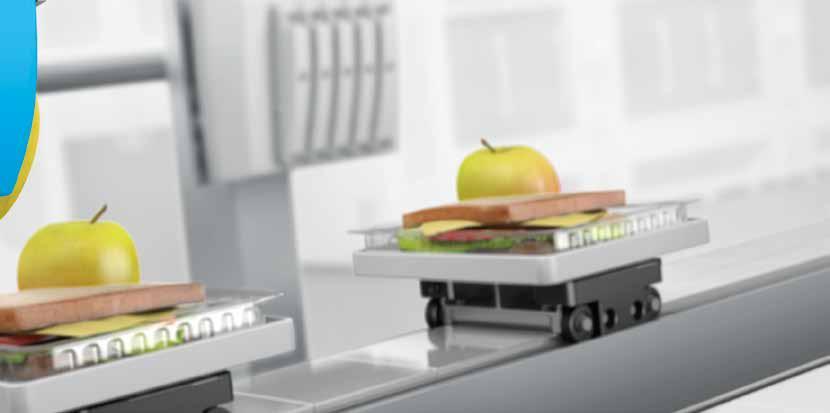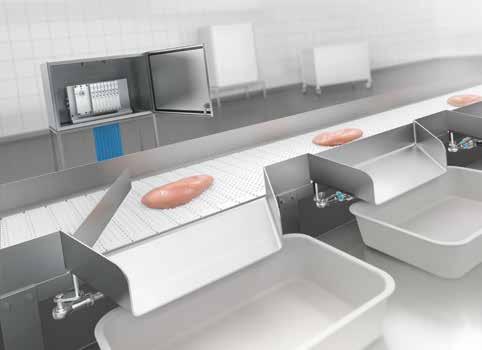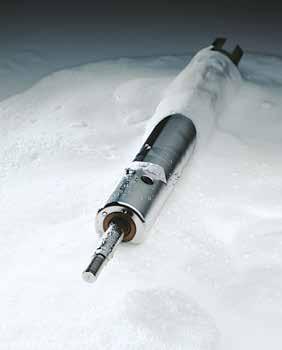
3 minute read
Making food hygiene automatic
Perfect-tasting food and drink, efficiently produced, is what every operator in the food and beverage sector wants to serve up. Automation technology is one of the key ingredients in achieving that goal.
Andy Macpherson Food & Beverage Industry Manager
Advertisement
Like every aspect of food and beverage production, automation technology needs to conform to strict hygiene standards and directives. Failing to live up to the requirements could be a recipe for ruin. At the very least, contaminated product is wasted product. At the very worst, it could be a major public health issue, and a public relations disaster for the brand. So automation technology must do more than simply optimise efficiency and maximise productivity. It also has to protect the consumer and the manufacturer’s brand.
The first step is to identify the risks. The second is to find products designed to prevent them. A clean sweep
There are three significant hazards in food and beverage production to be recognised and addressed: biological factors, chemical factors, and foreign particles. Firstly, biological factors. Decaying food is a source of micro-organisms and their toxins - which can be harmful to humans if ingested. An automated production line with nooks and crannies where food particles can hide and decay is a breeding ground for problems. Secondly, chemical factors. Deep cleaning of equipment is essential, but cleaning agents and disinfectants can contaminate products. Lubricants used in maintenance can also cause contamination.
Thirdly, foreign particles. Friction between components, wear and tear, corrosion and abrasion can all produce particles which could find their way into products. Selecting automation technology equipment carefully designed to mitigate all these hazards will greatly reduce the risk of product contamination.
Protect the consumer and the manufacturer’s brand Reduce the risk of product contamination
Setting the standard
Designing and manufacturing automation technology for optimum hygiene isn’t a matter of guesswork. The European Commission Machinery Directive 2006/42/ EC establishes the hygiene requirements for machinery used for preparing and handling food.
There’s also a European standard (EN 1672-2) which sets out the requirements for food processing machinery parts and components. This standard divides food production lines into three zones: Food, Splash and Non-Food. In the Food Zone, components are mounted directly in the food flow and come into contact with foodstuffs, so contaminated food could be returned to the product flow. Parts and components in this zone must be easy to clean and disinfect, corrosion resistant, non-toxic and non-absorbent. In the Splash Zone, parts and components come into direct contact with foodstuffs which do not return to the product flow. Design and build criteria are the same as for the Food Zone.
Finally, in the Non-Food Zone, there is no contact between parts and components and the product. Even so, they need to be made from corrosion-resistant materials, and be easy to clean and disinfect. Hygiene built in
Festo automation technology products are designed from the start to meet all the requirements for safe and hygienic food and beverage production – and to be a costeffective choice.
So, for example, Festo components for use in Food and Splash Zones use austenitic stainless steel for optimum cleanliness. But components for Non-Food Zones are manufactured with a high finish anodised surface that provides similar standards of hygiene at less cost. In the same way, system components are designed with smoother lines and rounded edges, to eliminate corners where contaminants can be missed during cleaning. And corrosion-resistant materials are used to reduce the risk of foreign particles.



A cost-effective choice
Even the smallest parts are designed by Festo with consideration for hygiene, cost and efficiency.
For example, the CRDSNU cylinder has a self-adjusting end position cushioning system – eliminating the need for adjusting screws which are susceptible to contamination. Dry-running seals are often used, so that machines can still function reliably even if the lubricating grease has been washed out during cleaning. And where threads can’t be avoided, they are closed off with covers and seals. Ingredients for success
Consumers expect the food and beverages they buy to be safe to eat and drink, as well as tasty. For the producer, that’s a huge responsibility. Choosing automation technology which can be relied on for hygienic performance and efficient operation is an important step in meeting customer expectations – and satisfying their appetites.










